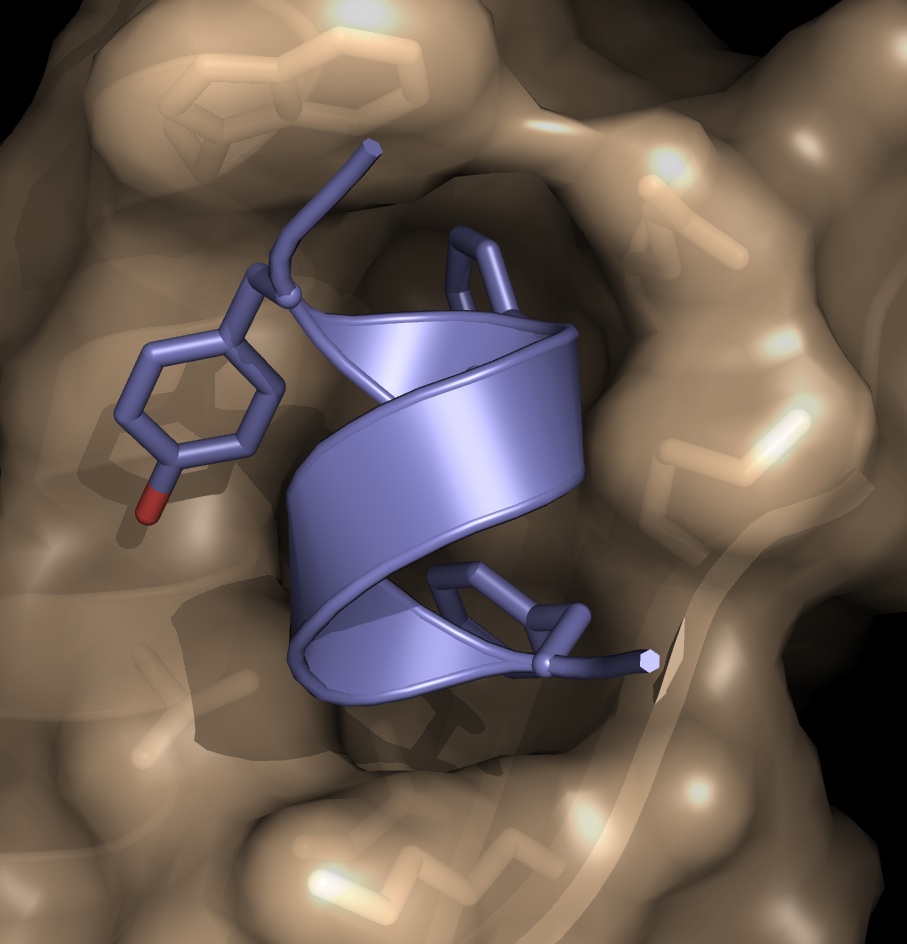 AUSTIN, Texas—Researchers at The University of Texas at Austin and Rutgers University have reported a discovery that could help scientists develop drugs to fight avian flu and other virulent strains of influenza.
AUSTIN, Texas—Researchers at The University of Texas at Austin and Rutgers University have reported a discovery that could help scientists develop drugs to fight avian flu and other virulent strains of influenza.
The researchers have determined the three-dimensional structure of a site on an influenza A virus protein that binds to one of the human protein targets, thereby suppressing a person’s natural defenses to the infection and paving the way for the virus to replicate efficiently. This so-called NS1 virus protein is shared by all influenza A viruses isolated from humans, including avian influenza, or bird flu, and the 1918 pandemic influenza virus.
About 10 years ago, Professor Robert M. Krug at The University of Texas at Austin discovered that the NS1 protein binds a human protein known as CPSF30, which is important for protecting human cells from flu infection. Once bound to NS1, the human protein can no longer generate molecules needed to suppress flu virus replication.
Now, researchers led by Krug and Rutgers Professor Gaetano T. Montelione, have identified the specific NS1 binding pocket that grasps the human CPSF30 protein.
“Our work uncovers an Achilles heel of influenza A viruses that cause human epidemics and high mortality pandemics,” said Montelione, professor of molecular biology and biochemistry at Rutgers. “We have identified the structure of a key target site for drugs that could be developed to effectively combat this disease.”
A paper detailing the breakthrough discovery appears in the Proceedings of the National Academy of Sciences Early Edition and will be published in an upcoming print issue of the journal.
The three-dimensional structure of the NS1 binding pocket was determined using X-ray crystallography by Kalyan Das, Eddy Arnold, LiChung Ma amd Montelione at Rutgers.
“The X-ray crystal structure gives us unique insights into how the NS1 and human proteins bind at the atomic level, and how that suppresses a crucial antiviral response,” said Das, research professor at Rutgers.
At The University of Texas at Austin, Krug, Rei-Lin Kuo, Jesper Marklund and Karen Twu verified the key role of the binding pocket in flu replication by genetically engineering a change to a single amino acid in NS1 protein’s binding pocket. This eliminated the protein’s ability to grasp the human protein that is needed to generate antiviral molecules.
These investigators then produced a flu virus with an NS1 pocket mutation and showed that this mutated virus does not block host defenses. As a consequence, it has a greatly reduced ability to infect human cells.
“These experiments validate the NS1 pocket as a target for antiviral drug discovery,” said Krug, professor and chair of molecular genetics and microbiology. “Because this NS1 pocket is highly conserved in all influenza A viruses isolated from humans, a drug targeted to the pocket would be effective against all human influenza A strains, including the bird flu.”
This project was supported by two different institutes at the National Institutes of Health (NIH), demonstrating how several NIH initiatives can complement each other.
Support for the Rutgers research was provided in part by the Protein Structure Initiative (PSI) of the NIH Institute of General Medical Sciences, a follow-on to the human genome project, which is providing large numbers of protein samples and three-dimensional structures of biologically important proteins to the broad scientific community.
"This work underscores the value of scientific collaborations between large-scale structural centers and individual biomedical research labs," said Dr. John Norvell, director of the PSI.
The University of Texas at Austin research was supported by a long-standing grant from the NIH Institute of Allergy and Infectious Disease (NIAID). In addition, NIAID has recently awarded a grant to The University of Texas at Austin and Rutgers to develop antiviral drugs directed against the NS1 binding pocket.
Other Rutgers faculty members of the research team were James Aramini, Rong Xiao, Li Zhao and Brian Radvansky. Most of the Rutgers investigators are also researchers at the Center for Advanced Biology and Medicine, a joint research institute of Rutgers and the University of Medicine and Dentistry of New Jersey – Robert Wood Johnson Medical School.
Krug is also a member of the Institute for Cellular and Molecular Biology at The University of Texas at Austin.

















Comments